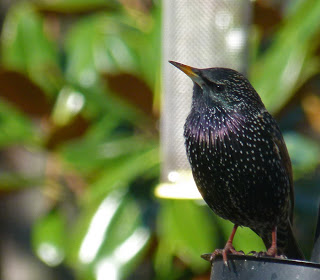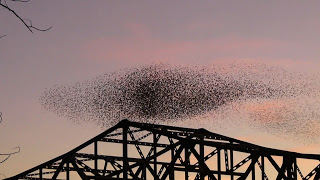After a number of misguided attempts to introduce starlings to North America, perhaps 60-100 starlings were released into Central Park, in New York City, in 1890 and 1891, by an acclimatization society headed by Eugene Schieffelin. Their goal was to introduce all birds mentioned in Shakespeare’s works. The entire North American population, now numbering more than 200,000,000, descended from these birds. By the late 1940s (see map), starlings had been seen in nearly all of the U.S. and Canadian provinces. Their population increased from 1966-1976, but seems to have stabilized since, perhaps due to limited nesting sites. Starlings are often found where ever there is food, nest sites and water – typically around cities and towns, and in agricultural areas. The only places they do not frequent are large expanses of woods, arid chaparral and deserts.
No one ever says the Starling is their favorite bird. After all, they are noisy, they poop all over your car, they eat most of the seeds in your birdfeeders, and they devour a farmer’s crops. They will take over the nesting boxes you put out for native species and kill any babies in it, or they move cheerfully into holes in the siding of your house. In the winter they gather in huge flocks, and sometimes you have to wonder if they are just birds, or something else altogether. What should a large gathering of Starlings be called? A flock, a horde, a blob, a swarm, a cloud? Murmuration is actually the term applied to large numbers of Starlings as they fly through the air like a swarm of insects.
Here are some things you never knew before about Starlings:




